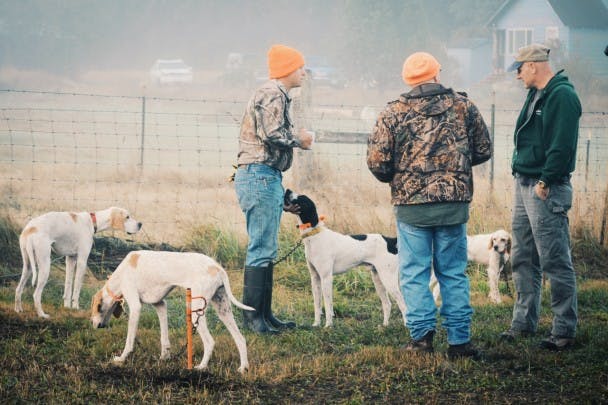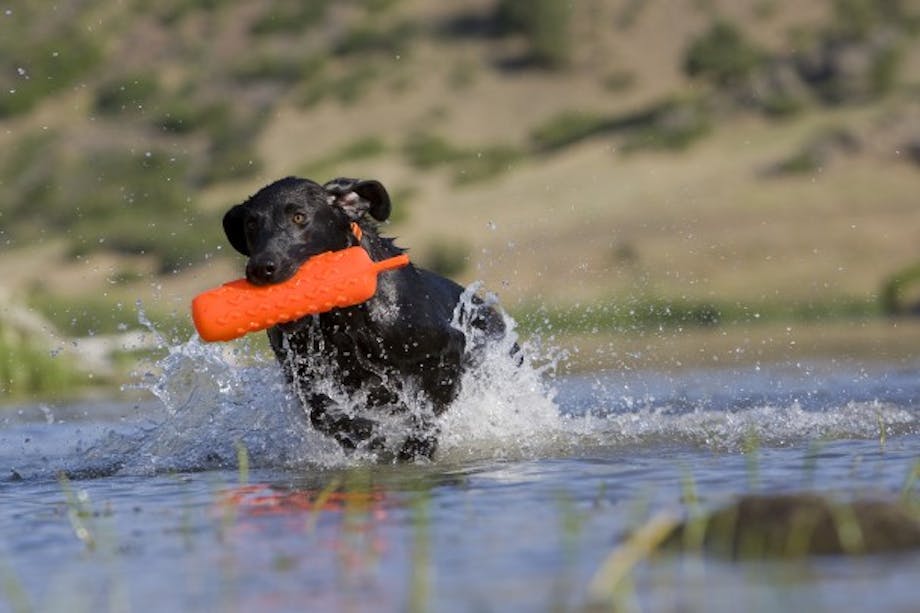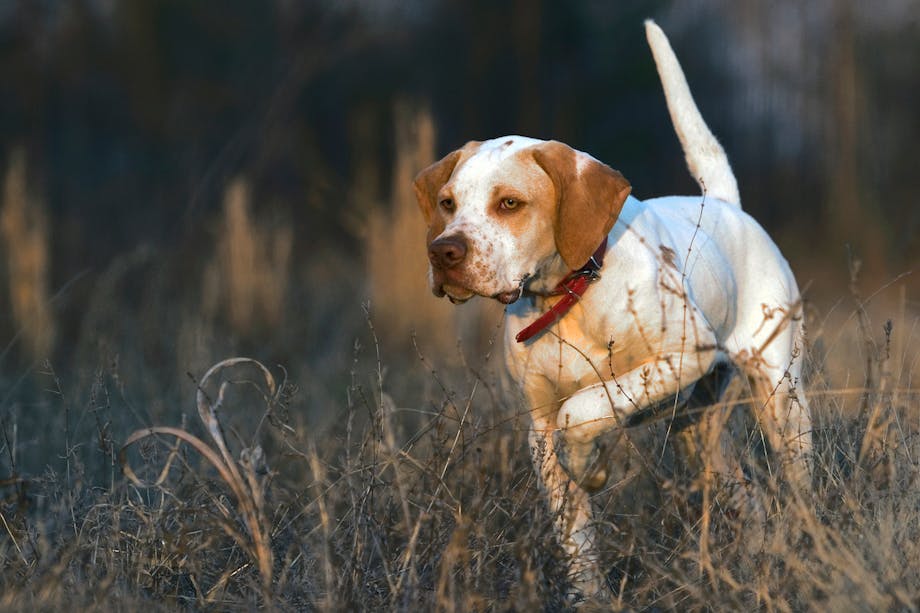 For over two decades, George Hickox has shown all levels of owners how to train great bird dogs. Today, George describes the importance of establishing gun sense with your young hunting dogs.
For over two decades, George Hickox has shown all levels of owners how to train great bird dogs. Today, George describes the importance of establishing gun sense with your young hunting dogs.
Photos courtesy of Martha Graffis.
We have waited impatiently all year for the opening of the upland bird seasons. Before taking Pupster out for his inaugural hunt ensuring he is completely gun broke is of paramount importance. Below are 4 of the do not’s when it comes to dogs and gunfire. Happy hunting and stay safe.
1. Never take a dog to a hunt that has not had birds shot over him in training previously. My friend Jerry recounted an incident where a client came from a far distance to experience a wild bird hunt for himself and his dog. The dog had not been shot over previously but had chased birds back home. The owner had taken the youngster to a preserve to expose his future partner in the field to pheasants. When the first cackling rooster erupted the dog’s owner missed on the first shot but dropped the bird on the second shot. Unfortunately the dog did not see the bird fall. When the second shot was fired the pup laid down. More dogs are made gun shy from the second shot than ever were made gun shy from the first shot. After that incident as soon as a pheasant flushed the dog took off in an opposite direction in anticipation of the shot that would follow. The moral of the story is that the dog’s first hunt is not the time or place to expose him to the gun. 2. Don’t expose the dog to multiple guns firing at volunteered birds. An often employed pheasant strategy is to block a field with gunners stationed at the end of a field or corn section. This post and drive method is very effective in reducing the pheasant population but has been a disaster for many dogs. Fido is running through the field when pheasants start flushing as the drivers march through the field. The dog quite often does not see the escaping birds in flight when there is a barrage of gunfire with a number of hunters emptying their guns. The dog is caught totally by surprise and can be permanently afraid of the sound of a discharging shotgun. Even a dog that has been exposed to the gun by having one or two shots fired when he sees the bird can become totally un-nerved when subjected to World War Three.
2. Don’t expose the dog to multiple guns firing at volunteered birds. An often employed pheasant strategy is to block a field with gunners stationed at the end of a field or corn section. This post and drive method is very effective in reducing the pheasant population but has been a disaster for many dogs. Fido is running through the field when pheasants start flushing as the drivers march through the field. The dog quite often does not see the escaping birds in flight when there is a barrage of gunfire with a number of hunters emptying their guns. The dog is caught totally by surprise and can be permanently afraid of the sound of a discharging shotgun. Even a dog that has been exposed to the gun by having one or two shots fired when he sees the bird can become totally un-nerved when subjected to World War Three.
Attention should be given to preparing a dog to gunners shooting at volunteered birds that the dog does not see. I place remote launchers in the field loaded with pigeons. I mark the area the launcher is located with a piece of survey tape to help me in the timing of the release to insure the dog sees the birds in the initial training sessions. This exercise is implemented after the dog has been properly exposed to the crimp gun, small gauge shotguns, and eventually the twelve gauge with birds Pupster is chasing. I run the canine pupil with the wind blowing from the dog to the launcher. This is not a scent drill where I want the dog to smell the bird. I launch the bird at some distance from the dog. I want the dog to see the bird. I have an assistant located at a distance from the dog and launcher. If the dog sees the bird released the assistant fires a crimp gun. If the dog does not see the bird there is no shot. I use a clipped wing pigeon in the launcher. A clipped wing can only fly a short distance and always comes down. No one ever misses a clipped wing pigeon. Over a period of sessions we graduate from the crimp pistol to the sundry shotgun gauges. The finishing step is to fire a shot prior to launching the bird. The shot is fired, the bird is launched, and hopefully the dog sees the bird. Now the dog upon hearing a shot will immediately look for the flying bird. Then, and only then, will we begin firing multiple shots. 3. Don’t walk straight up a pointing dog’s back while he is standing a bird. Always walk out to the side of the dog and get in front. Any reader that has experienced a shotgun blast coming from directly behind him knows the pain. A dog does not have ESP hearing protection and repeated gunfire hurting his ears can lead to potential gun problems.
3. Don’t walk straight up a pointing dog’s back while he is standing a bird. Always walk out to the side of the dog and get in front. Any reader that has experienced a shotgun blast coming from directly behind him knows the pain. A dog does not have ESP hearing protection and repeated gunfire hurting his ears can lead to potential gun problems.
4. Never expose a dog to the sound of the shot initially to “see how he will do.” I recommend initially exposing the dog to birds and the flush before introducing the gun. When the dog is aggressive on chasing the bird I then throw a clipped wing with the dog in full pursuit. My assistant is standing forty yards or so away. When the bird comes down with the dog thinking “I got you. I got you.” the assistant fires a crimp gun. When the dog has no problem with the crimp pistol we move to a 410, then a 28 or 20 gauge, and finally the 12 gauge.
Do not assume the pup will not be gun shy. Assume he will have a problem with the sound of the shot and employ sound training techniques to ensure that Fido enjoys his trips to the field.


